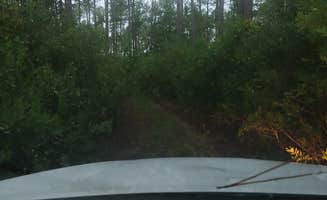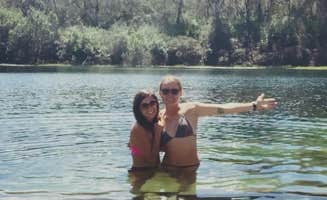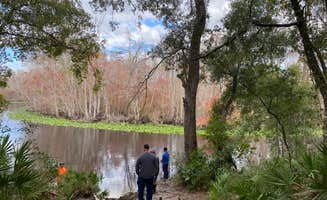Dispersed camping in Ocala National Forest requires campers to navigate challenging terrain for a primitive experience. The 383,000-acre forest contains multiple designated dispersed camping areas that lack amenities but provide direct access to Florida's unique ecosystems. Winter temperatures range from 40-70°F, while summer brings highs of 90+°F with high humidity and frequent afternoon thunderstorms.
What to do
Kayaking at creek access points: Freak Creek Dispersed Camping provides direct water access for paddlers. "It's super secluded and quiet... Great place to put a kayak in the water," notes Adamm A. about this Freak Creek Dispersed Camping location.
Wildlife observation: The forest hosts diverse species including deer, turtles and various birds. Near Blue Sink, campers can explore natural sinkholes. As Destiny R. describes it, "Most beautiful place to stumble upon. You may need ATV or creative backpacking to get there now."
Stargazing opportunities: The lack of light pollution makes night sky viewing exceptional. A camper at St. Johns River notes, "Right next to the river and the trees open up so you get a great view of the stars."
What campers like
Secluded camping spaces: Most dispersed sites provide significant distance from other campers. At Trout Lake Primitive Sites, Entropical Breeze E. found "nice secluded sites" and noted the "main road entry is packed dirt; smaller access road to sites is two-track about 1/4 mile through woods."
Forest environment: The pine and oak canopy provides welcome shade during hot months. One camper at Davenport Landing reported they "had no one around and nice and cool in the forest."
Historical exploration: Some sites contain remnants of earlier settlements. Davenport Landing features a "1.2 mile interpretive hiking trail called Davenport Landing Trail that will take to you to the former steamboat landing," according to Stuart K., who adds there's "a small gravesite from the Civil War that you can find along with middens along the Ocklawaha River."
What you should know
Vehicle requirements: Many access roads demand high-clearance vehicles. Hilary G. warns about Freak Creek: "The main road in has huge deep ruts, the other road has a water crossing that was over my bumper on my lifted Mojave... If you don't have 4wd and recovery gear I wouldn't risk it."
Limited cell service: Most dispersed sites have poor to non-existent connectivity. One Trout Lake camper mentions "Poor cell service even with booster."
Navigation challenges: Forest roads can be confusing and poorly marked. At St. Johns River Dispersed Spot, Mike D. cautions "The roads to get here are bumpy."
Resident encounters: Some sites have unauthorized long-term users. At Davenport Landing, Dylan D. reports: "Really nice area unfortunately there's a homeless commune... wasn't until a few hours later when I realized that they were living there."
Tips for camping with families
Site selection priorities: Choose areas with access to water features for recreation. Davenport Landing offers "an amazing little access point here to the Ocklawaha river" with "emerald-green waters shouldered with an abundance of spade-shaped lily pads."
Wildlife awareness: Educate children about potential animal encounters. According to one camper at St. Johns River Dispersed Spot, the area has excellent wildlife viewing opportunities, especially near water access points.
Sand management: Pack extra clothing and gear for sand-heavy sites. David P. noted at Davenport Landing: "Big open spot. Last 100 yards driving back in were very bumpy but no problem with our van."
Tips from RVers
Clearance limitations: Many forest roads have low-hanging branches. Entropical Breeze E. at Trout Lake found "very narrow tree clearance" and "Just barely scraped a FWD Promaster through the trees, into a pullout just before sand started."
Size restrictions: Larger RVs will find few suitable dispersed sites. "I would not attempt bringing a camper unless it's really small," advises Adamm A. about Freak Creek.
Vehicle recovery equipment: Pack traction aids and extraction tools. One visitor cautions that many access roads become increasingly difficult after rain with sand, mud, and deep potholes presenting challenges.




